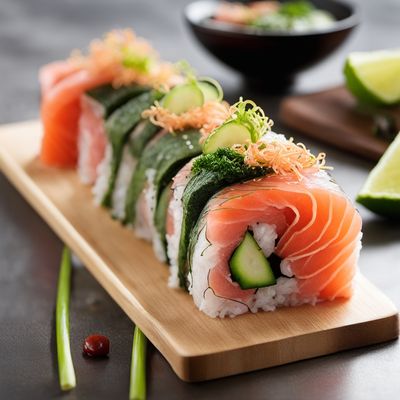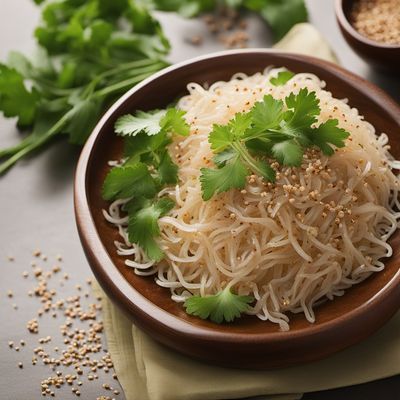
Ingredient
Jellyfishes and similar
The Ocean's Delicate Gems
Jellyfish is a gelatinous marine creature that belongs to the phylum Cnidaria. It has a delicate, almost crunchy texture and a subtle, slightly briny flavor. Its appearance is characterized by translucent, umbrella-shaped bodies and long, trailing tentacles. When properly prepared, jellyfish can be enjoyed in various Asian cuisines, particularly in dishes like jellyfish salad and stir-fried jellyfish.
Origins and history
Jellyfish has a long history of culinary use in Asian countries like China, Japan, and Korea. It has been consumed for centuries and is often associated with festive occasions and special celebrations. In Chinese culture, jellyfish symbolizes good luck and prosperity. Today, jellyfish is also gaining popularity in Western countries as a unique and exotic ingredient.
Nutritional information
Jellyfish is low in calories and fat, making it a light and healthy addition to meals. It is also a good source of protein and contains essential minerals like calcium, iron, and magnesium.
Allergens
Shellfish allergy.
How to select
When selecting jellyfish, look for specimens that are firm, translucent, and free from any signs of discoloration or sliminess. Fresh jellyfish should have a mild, oceanic smell. If purchasing dried jellyfish, ensure that it is properly packaged and stored in a cool, dry place.
Storage recommendations
To maintain the freshness of jellyfish, it is best to consume it as soon as possible after purchase. If storing for a short period, keep it in a sealed container in the refrigerator. Dried jellyfish can be stored in a cool, dry place for an extended period.
How to produce
Jellyfish cannot be easily produced or cultivated by amateurs due to its complex life cycle and specific environmental requirements. It is primarily harvested from the wild, often using specialized fishing techniques. Commercial jellyfish farming is limited and mostly done on a large scale in specialized facilities.
Preparation tips
Jellyfish requires thorough cleaning and preparation before consumption. It is typically blanched or soaked in water to remove excess salt and any residual toxins. Once prepared, jellyfish can be used in salads, stir-fries, or as a topping for noodles or rice dishes. It pairs well with ingredients like cucumber, sesame oil, soy sauce, and chili.
Culinary uses
Jellyfish is commonly used in Asian cuisines, particularly in Chinese, Japanese, and Korean dishes. It is often featured in salads, stir-fries, and cold appetizers. Its unique texture and subtle flavor make it a prized ingredient in dishes that showcase its delicate nature.
Availability
Commonly available in coastal regions of Asia, including China, Japan, Korea, and Southeast Asian countries.
More ingredients from this category

Processed or preserved seafood
The Ocean's Bounty: Processed or Preserved Seafood

Molluscs
Oceanic Delicacies

Sea-squirts and other tunicates
Oceanic Delicacies

Crustaceans
The Ocean's Delicacy: Crustaceans

Seafood offal
The Hidden Gems of the Sea: Exploring Seafood Offal

Sea urchins and other echinoderms
Ocean's Delicacies: Exploring the World of Echinoderms

